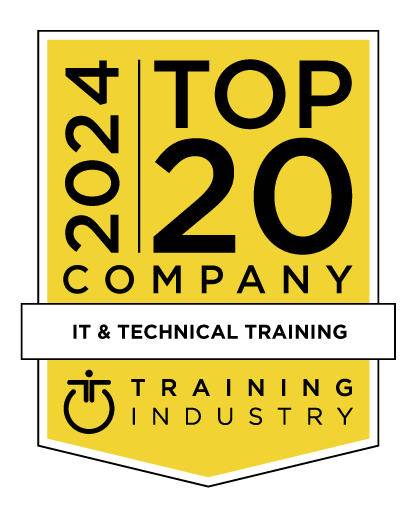title
Please take a moment to fill out this form. We will get back to you as soon as possible.
All fields marked with an asterisk (*) are mandatory.
Introduction to WebSphere Business Modeler
Course Description
Overview
This course is designed to provide students with a combination of instructor-led discussions and interactive workshops to illustrate the use of the modeling abilities within WebSphere Modeler. This course will focus on; role of the integration server, role of different integration patterns, WBI toolset implementations, demonstrate process modeling abilities, process simulation execution, performing model analysis, reporting capabilities and versioning. This course will utilize a variety of different case studies and practical tutorials to demonstrate the abilities of the WBI Modeler to support business process modelingObjectives
- Understand the concepts and capabilities of Business Process Modeling
- Understand the concepts of business process modeling
- Illustrate the role of the IBM WBI Modeler toolset
- Depict the different types of business integration patterns: Business, Integration, Application and Runtime
- Discuss the role of eCommerce integration patterns
- Depict the abilities of the Modeler toolset and illustrate the various model elements
- Demonstrate the methods for building effective process models
- Create process models using connectors, repositories, services and tasks
- Illustrate advanced Model Elements
- Perform simulation for all of our designed business processes using tokens and interrupts
- Illustrate use of WBI analysis tools for static, dynamic, profile and model analysis
- Depict the various reporting functions within the modeling tool
- Illustrate the versioning of modeling projects
Audience
- Java or OO Developers
- Web Page Designers
- Professionals that will be designing and modeling large scale applications using WebSphere Business Modeler
Prerequisites
- Basic understanding of application development
- Exposure to an object-oriented programming language is desirable
Topics
- N-tier architecture
- Model-View-Controller
- WebSphere BI products
- WBI Server
- WBI InterChange Server
- WebSphere MQ Workflow
- WBI Message Broker
- WBI Adapters
- WBI Modeler
- WBI Monitor
- Web Server
- WebSphere Application Server
- Standalone vs. Network Deployment administration
- J2EE platform and APIs (JMS, JNDI, JDBC, etc)
- J2EE packaging
- Application lifecycle
- Defining BPM
- Benefits of BPM
- Introduction to Service Oriented architecture
- Integrating BPM into SOA
- Defining eBusiness Integration Patterns
- Business
- Integration
- Application
- Runtime
- Business patterns
- Self Service
- Collaboration
- Information aggregation
- Extended Enterprise
- Integration Patterns
- Process
- Application
- Information
- Illustrating WebSphere Business Modeler
- Eclipse-based environment
- Dominant capabilities
- Available implementations
- Basic
- Advanced
- Publishing Server
- Components
- WebSphere Integration Developer
- WebSphere Process Server
- Project organization
- Projects
- Catalogs
- Business groups
- Creating a process
- Exporting and importing
- Basics of simulation and analysis
- Defining model elements
- Using Data catalogs
- Business Items
- Role of Notifications
- Use of Notification templates
- Business modeling modes
- Process diagram
- Tasks
- Services
- Repositories
- Connector
- Specify input and output data
- Conditional components
- Forks
- Merge
- Loops
- BPEL scope concept
- Parallel processing
- Conditional process branching
- Process looping
- Overview of BPEL activities
- Creating process variables
- Add transformations (XSLT) to a process
- XSLT process mapper
- Process mapper advanced features (if, foreach, choose, function set)
- Using XPath to get information
- Testing transformations
- Why adapters?
- Adapter architecture (JCA)
- Adapter Integration in Oracle BPEL
- Invoking Database adapter
- Using Siebel adapter
- Human workflow requirements
- Human workflow patterns
- Human workflow security (XML file, Database, LDAP)
- Create/View a task
- Task Routing
- Features of the worklist
- Notification services
- Fault handler scope
- Catching faults
- Handling timeout conditions with Pick and On-alarm
- Compensation handlers
- Automatic failure retry
- Resources
- Resource catalogs
- Roles
- Timetables
- Costs
- Modeling organizations
- Working with expressions
- Adding colors
- Components
- Map
- Observer
- Timer
- Classifiers
- Specify cost and revenue
- Measures
- Input criteria
- Precondition
- Correlation
- Output criteria
- Post condition
- Require roles
- Specify resources
- Individual resources
- Bulk resources
- Specify organizational unit
- Specify location
- Specify classifier value
- Swimlane layout
- Process validation
- Process simulation
- Simulation components
- Tokens
- Interrupts
- Attributes
- Using model analysis
- Analysis templates
- Static analysis
- Model analysis
- Profile analysis
- Dynamic analysis
- Query feature
- Report designer and using templates
- Documentation reports
- Dynamic analysis reports
- Static analysis reports
- Printing and exporting reports
Self-Paced Training Info
Learn at your own pace with anytime, anywhere training
- Same in-demand topics as instructor-led public and private classes.
- Standalone learning or supplemental reinforcement.
- e-Learning content varies by course and technology.
- View the Self-Paced version of this outline and what is included in the SPVC course.
- Learn more about e-Learning
Course Added To Shopping Cart
bla
bla
bla
bla
bla
bla
Self-Paced Training Terms & Conditions
Exam Terms & Conditions
Sorry, there are no classes that meet your criteria.
Please contact us to schedule a class.

STOP! Before You Leave
Save 0% on this course!
Take advantage of our online-only offer & save 0% on any course !
Promo Code skip0 will be applied to your registration
Purchase Information
title
Please take a moment to fill out this form. We will get back to you as soon as possible.
All fields marked with an asterisk (*) are mandatory.










